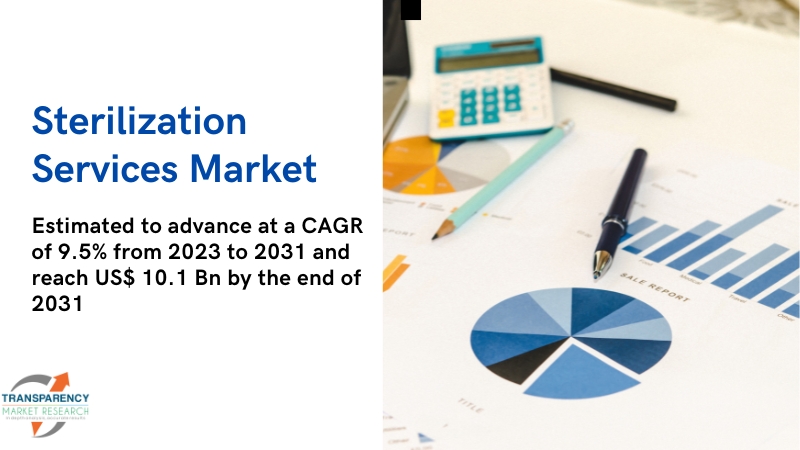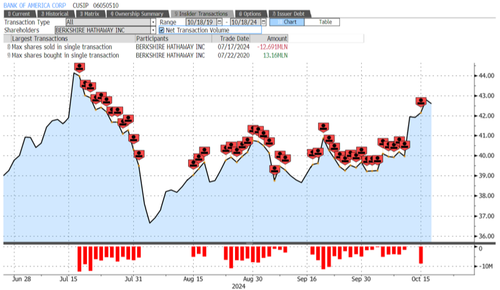
Pahis/iStock via Getty Images Market Review: Balancing Act Notwithstanding the (seasonally affected) early-year bump in the long and winding road towards its long-run target level, measured inflation moderated in the second quarter to fall back in line with the broader trend observed over the past twelve months. Both core CPI and core PCE - the latter being the Federal Reserve's (Fed's) preferred measure of inflation in the U.S.
economy - fell on a year-over-year basis to levels not seen since 2021, clearly indicating some degree of success on the Fed's part after launching the most aggressive hiking cycle in decades. Indeed, the quarter closed with core PCE coming in at 2.6% annually, breaking through the 2.
8% year-end floor projected by the Fed at its June Federal Open Market Committee (FOMC) meeting. Despite this progress, Fed officials continued to push back on expectations by preaching patience, emphasizing data dependency, and cautioning against easing policy too soon, for fear of reigniting inflationary pressures. With this, the prospect of a potential rate hike gained traction in April and caused an early-quarter surge in U.
S. Treasury yields that was unable to be fully reversed by bond-friendly data releases in May and June, ultimately resulting in the 2-Year yield ( US2Y ) up 14 basis points (bps) over the period while the 10- ( US10Y ) and 30-Year ( US30Y ) increased 20 and 21 bps, respectively. Though inflation and the timing of rate cuts have drawn the most attention, the other side of the Fed's mandate, employment, has quietly weakened in the background.
Commonly referred to as "out of balance" by Fed Chair Jerome Powell throughout this cycle, the labor market has faded demonstrably in recent months with unemployment up over 50 bps from cycle lows to 4.0% and job openings, a key measure of labor demand, at the lowest level in three years. Further, wage gains - a hallmark of pandemic-related dislocations in labor markets as workers voluntarily left jobs for better pay - have slowed, with the voluntary quits rate falling along with it.
Such developments heighten the risks of monetary policy decisions; what was once a tighten-at- all-costs approach to combat inflation and restore balance to the labor market is now a much more nuanced proposition given the rise in unemployment with inflation not yet at target levels. Equity markets seemed unfazed by the potential downside en route to a 4.3% gain in the second quarter, bringing the year-to- date advance to 15.
3% by the S&P 500 Index. ( SP500 , SPX ) However, these gains have been largely driven by the top cohort of names in the Index, with the equal-weighted version down 2.6%, perhaps painting a more realistic picture of current conditions.
Fixed income returns were more subdued, with the Bloomberg U.S. Aggregate Bond Index ("Index") up just 0.
1% in the quarter, though the near 50 bps increase in U.S. Treasury yields across the curve from start of year levels dragged the asset class to a 0.
7% year-to- date loss. Equity-like enthusiasm carried over into the corporate sector, however, as the high yield cohort notched a 1.1% gain for the quarter and led fixed income sectors on a duration-adjusted basis.
Meanwhile, investment grade yield spreads reached new cycle-lows of 80 bps over Treasuries before softening somewhat to end the quarter at 88 bps, which combined with their longer duration profiles to drive a loss of 0.1% in the higher rate environment. In securitized markets, asset-backed securities (ABS) led with a 1.
0% advance on continued strong new issue sponsorship, followed by commercial mortgage-backed securities ('CMBS') with a 0.7% gain as private label issues continued their run of strong performance. Finally, in residential MBS, the non- agency sector rode the tailwinds of sustained demand, limited net issuance and resilient home prices, while elevated yields and rate volatility weighed on agency MBS which produced total returns of just 0.
1%. Performance The MetWest AlphaTrak 500 Fund M-Class ( MWATX, "Fund") returned 4.17% (net of fees) during the second quarter of 2024 but trailed the S&P 500 Index ( SP500 , SPX ) by 11 bps.
While the Fund's holding of S&P 500 Index futures allows for replication of the Index returns, relative underperformance was attributable to the Fund's short-duration fixed income portfolio collateralizing the futures contracts. Duration positioning of the Fund was held at just over 1.4 years throughout the period, which benefitted relative performance in May and June as rates declined but was a significant headwind in April amid the reset higher in yields, ultimately resulting in a negative relative performance impact for the quarter.
However, returns benefitted from the allocation to fixed income spread sectors, with CMBS exposure performing well given strong total and excess returns for both agency and private label deals. Fund holdings emphasized senior single asset single borrower (SASB) deal structures backed by high-performing collateral and well-capitalized sponsors, which helped to avoid some of the broader credit concerns in the sector that impacted conduit deals or SASBs with weaker collateral. Elsewhere in securitized, agency MBS modestly weighed on returns as the sector trailed comparable Treasuries, while non-agency MBS provided a tailwind, as both legacy and 2.
0 issues outperformed given increased demand and falling yield premiums. The Fund's exposure to ABS also benefited returns as the sector managed positive total and excess returns for the quarter. Finally, the exposure to short corporates positively impacted relative performance as the sector finished ahead of duration-matched Treasuries, with issue selection among banking and consumer non-cyclical names providing an additional boost.
You should consider the investment objectives, risks, charges and expenses of a mutual fund carefully before investing. A Fund's Prospectus and Summary Prospectus contain this and other information about the Fund. To receive a Prospectus, please call 800-241-4671 or you may download the Prospectus from the Fund's website at TCW.
com . Please read it carefully. Click to enlarge Outlook & Positioning A turn of the calendar from June to July marks the two-year anniversary of the U.
S. Treasury yield curve's inversion and one year since the Fed last raised rates. And while some may argue that the avoidance of an immediate slowdown (i.
e., negative GDP) in the face of such milestones indicates some newfound immunity to restrictive policy, mounting stress at the consumer and corporate level instead suggests that this time is likely no different, even if the total effects have yet to fully materialize. Recent delinquency data reveals that prime borrowers are beginning to suffer along with lower income consumers as the impacts of higher prices, higher rates, and tighter credit conditions, take their toll.
Meanwhile, many corporations have underperformed earnings expectations and reduced forward guidance, citing increased consumer frugality as one of the primary reasons. After multiple quarters of companies passing higher prices through to end-users, it is becoming increasingly clear that pricing power is subsiding, leaving capex or headcount reductions the primary means to protect margins - all of which portend negative impulses to economic growth. This potential stress, coupled with the Fed's resolute commitment to avoiding a 1970s style stagflation, increases the likelihood that it keeps rates too high for too long, ultimately compounding what is an already evident uptick in unemployment.
Such an environment is expected to elicit a more forceful and abrupt shift in monetary policy than what is currently priced into markets, likely resulting in a sharp steepening of the yield curve as the Fed moves to support the economy and fulfill the other side of its dual mandate. With expectations for normalization in both the level and term structure of interest rates, the duration position ended the quarter at 1.4 years.
Sector positioning is informed by a recognition that valuations in certain markets do not reflect the prospective risks of a slowing economy, especially corporate markets, where yield premiums remain near the lowest levels experienced since the Global Financial Crisis. As such, the Fund maintains a more defensive profile among corporate credit, with higher quality exposures and an emphasis on industries that typically better withstand cyclical volatility like communications, non-cyclicals, and those not closely tied to consumer discretionary spending. Unlike corporate markets, securitized sectors provide more attractive opportunities given better risk compensation and more favorable outlooks, especially agency MBS.
The risk-adjusted return potential is supported by very attractive yield premiums (relative to the sector's history and versus other high-quality segments of the market) and favorable fundamentals including abundant liquidity and limited credit risk given the government guarantee, with the return of overseas and bank demand joining increased money manager flows to further support the sector. Non-agency MBS also exhibits attractive yields and solid fundamentals given years of amortization and house price appreciation that has built up substantial equity in the underlying properties, which incentivizes homeowners to remain current and helps insulate bondholders from potential losses. Meanwhile, CMBS represents a small and targeted allocation, focused on deals backed by trophy property collateral and/or strong, experienced sponsors that can withstand prospective volatility in the sector.
Finally, ABS positions similarly reflect targeted allocations within AAA-rated CLOs and automobile collateral given the belief that weaker structures or those backed by unsecured collateral are likely to face challenges in a slowing economy. IMPORTANT DISCLOSURE This material reflects the current opinions of the author but not necessarily those of TCW and such opinions are subject to change without notice. TCW, its officers, directors, employees or clients may have positions in securities or investments mentioned in this publication, which positions may change at any time, without notice.
This material may include estimates, projections and other "forward-looking" statements. Actual events may differ substantially from those presented. TCW assumes no duty to update any such statements.
All projections and estimates are based on current asset prices and are subject to change. Performance Detail as June 30, 2024 Annualized (%) June YTD 2Q 1 Year 3 Year 5 Year 10 Year Since Inception 1 MUTF: MWATX (M Share) Inception Date 6/22/1228 3.58 14.
55 4.17 24.35 8.
29 13.91 12.91 8.
26 S&P 500 Index 3.59 15.29 4.
28 24.56 10.01 15.
05 12.86 8.19 Expense Ratio (%) M Share Gross 1.
30 Net 2 0.47 Click to enlarge Annual fund operating expenses as stated in the Prospectus dated July 29, 2023. The performance data presented represents past performance and is no guarantee of future results.
Total returns include reinvestment of dividends and distributions. Current performance may be lower or higher than the performance data presented. Performance data current to the most recent month end is available on the Fund's website at TCW.
com . Investment returns and principal value will fluctuate with market conditions. The value of an investment in the Fund, when redeemed, may be worth more or less than its original purchase cost.
For period 6/29/98 - 6/30/2024. Not annualized if less than one year. Expenses reflect a contractual agreement by the Adviser to reduce its fees and/or absorb certain expenses to limit the fund's total annual operating expenses until July 31, 2024, unless terminated earlier by the Board of Trustees.
Performance would have been lower if fees had not been waived in various periods. S&P 500 Index - A capitalization-weighted index of 500 stocks designed to measure performance of the broad domestic economy through changes in the aggregate market value of 500 stocks representing all major industries. The index is not available for direct investment; therefore its performance does not reflect a reduction for fees or expenses incurred in managing a portfolio.
The securities in the index may be substantially different from those in the Fund. Source: TCW, BNY Mellon Investment Risks It is important to note that the Fund is not guaranteed by the U.S.
Government. Fixed income investments entail interest rate risk, the risk of issuer default, issuer credit risk, and price volatility risk. Funds investing in bonds can lose their value as interest rates rise and an investor can lose principal.
Mortgage-backed and other asset-backed securities often involve risks that are different from or more acute than risks associated with other types of debt instruments. MBS related to floating rate loans may exhibit greater price volatility than a fixed rate obligation of similar credit quality. With respect to non-agency MBS, there are no direct or indirect government or agency guarantees of payments in pools created by non-governmental issuers.
Non-agency MBS are also not subject to the same underwriting requirements for the underlying mortgages that are applicable to those mortgage-related securities that have a government or government-sponsored entity guarantee. For a complete list of Fund risks, please see the Prospectus. Glossary of Terms Agency MBS - The purchase of mortgage-backed securities issued by government-sponsored enterprises such as Ginnie Mae, Fannie Mae or Freddie Mac.
Aggregate - Formed or calculated by the combination of many separate units or items; total. Amortization - The paying off of debt with a fixed repayment schedule in regular installments over a period of time. Asset-Backed Securities - A financial security backed by a loan, lease or receivables against assets other than real estate and mortgage-backed securities.
Basis Point ('bps') - One hundredth of one percent, used chiefly in expressing differences of interest rates. Bloomberg Aggregate Bond Index or "the Agg" - Is a broad-based fixed-income index used by bond traders and the managers of mutual funds and exchange-traded funds (ETFs) as a benchmark to measure their relative performance. Bond - A fixed income instrument that represents a loan made by an investor to a borrower (typically corporate or governmental).
A bond could be thought of as an I.O.U.
between the lender and borrower that includes the details of the loan and its payments. A bond has an end date when the principal of the loan is due to be paid to the bond owner and usually includes the terms for variable or fixed interest payments that will be made by the borrower. Bonds are used by companies, municipalities, states, and sovereign governments to finance projects and operations.
Owners of bonds are debtholders, or creditors, of the issuer. Capital Expenditure ('capex') - Funds used by a company to acquire or upgrade physical assets such as property, industrial buildings or equipment. It is often used to undertake new projects or investments by the firm.
CMBS (Commercial Mortgage-Backed Securities) - A debt obligation that represents claims to the cash flows from pools of mortgage loans on commercial property. CLO (Collateralized Loan Obligations) - A special purpose vehicle (SPV) with securitization payments in the form of different tranches. Financial institutions back this security with receivables from loans.
Collateral - Property or other assets that a borrower offers a lender to secure a loan. Cohort - A group who shared a particular characteristic or a particular time span. Consumer Non- Cyclicals - Goods and Services economic sector consisting of companies engaged in fishing and farming operations; the processing and production of food, beverages and tobacco; manufacturers of household and personal products; and providers of personal services.
Core Consumer Price Index (Core CPI) - A measure that examines the weighted average of prices of a basket of consumer goods and services excluding food and energy. Core PCE Index - Measures the prices paid by consumers for goods and services without the volatility caused by movements in food and energy prices to reveal underlying inflation trends. Corporate - Of or relating to a bond issued by a corporation as opposed to a bond issued by the U.
S. Treasury, a non-U.S.
government or a municipality. Corporate Credit - A term that is used in written investment materials and commentaries to refer to a corporation's debt or to the corporate debt market as a whole. CPI (Consumer Price Index) - A measure that examines the weighted average of prices of a basket of consumer goods and services, such as transportation, food and medical care.
Credit A contractual agreement in which a borrower receives something of value now and agrees to repay the lender at a later date, generally with interest. Credit also refers to the creditworthiness or credit history of an individual or company. Cyclical - A cyclical stock is a stock highly correlated to changes in the economy.
Defensive or Defensiveness - A conservative method of portfolio allocation and management aimed at minimizing the risk of losing principal. Dislocation - Circumstance in which financial markets, operating under stressful conditions, cease to price assets correctly on an absolute and relative basis. Duration - A measure of the sensitivity of the price (the value of principal) of a fixed-income investment to a change in interest rates.
Duration is expressed as a number of years. Rising interest rates mean falling bond prices, while declining interest rates mean rising bond prices. Easing - A monetary policy in which a central bank purchases government securities or other securities from the market in order to lower interest rates and increase the money supply.
Federal Reserve (the Fed) - The central bank of the United States which regulates the U.S. monetary and financial system.
Floating Rate - Any interest rate that changes on a periodic basis. The change is usually tied to movement of an outside indicator, such as the prime interest rate. FOMC (Federal Open Market Committee) - The branch of the Federal Reserve Board that determines the direction of monetary policy.
Fundamentals - For businesses, information such as profitability, revenue, assets, liabilities, and growth potential are considered fundamentals. Futures - A legally binding agreement to buy or sell a commodity or financial instrument in a designated future month at a price agreed upon at the initiation of the contract by the buyer and seller. Futures contracts are standardized according to the quality, quantity, and delivery time and location for each commodity or financial instrument.
GDP (Gross Domestic Product) - The market value of all final goods and services produced within a country in a given period of time. High Yield - A bond that is rated below investment grade. Inflation - A condition of a rise in the general level of prices of goods and services in an economy over a period of time.
Inflationary - Of, associated with, or tending to cause inflation. Interest Rate - The proportion of a loan that is charged as interest to the borrower, typically expressed as an annual percentage of the loan outstanding. Inverted Yield Curve - An interest rate environment in which long-term debt instruments have a lower yield than short-term debt instruments of the same credit quality.
This type of yield curve is the rarest of the three main curve types and is considered to be a predictor of economic recession. Investment Grade - A bond that is rated Baa3/BBB- or higher by Moody's, Standard & Poors and Fitch. Labor Market - The nominal market in which workers find paying work, employers find willing workers, and wage rates are determined.
Liquidity The ability to convert an asset to cash quickly. MBS (Mortgage-Backed Securities) - A type of asset-backed security that is secured by a mortgage or collection of mortgages. These securities must also be grouped in one of the top two ratings as determined by a accredited credit rating agency, and usually pay periodic payments that are similar to coupon payments.
Furthermore, the mortgage must have originated from a regulated and authorized financial institution. Margin - In a general business context, the difference between a product's (or service's) selling price and the cost of production. Monetary Policy - The actions of a central bank, currency board or other regulatory committee that determine the size and rate of growth of the money supply, which in turn affects interest rates.
Non-agency - Mortgage backed securities made up of mortgage loans that are not guaranteed by a government-supported agency. Non-Agency MBS - Mortgage backed securities sponsored by private companies other than government sponsored enterprises such as Fannie Mae or Freddie Mac. Non-cyclical - Non-cyclical stocks repeatedly outperform the market when economic growth slows.
Non-cyclical securities are generally profitable regardless of economic trends because they produce or distribute goods and services we always need, including things like food, power, water, and gas. Normalization - Refers to the unwind of current monetary policy stimulus. Outperform - Outperform is when an investment is expected to perform better than the return generated by a particular index or the overall market.
Since the performance of many investments is compared to a benchmark index, outperform refers to generating a higher return than a particular benchmark over time. Outperform also refers to an analyst's rating on a security, and outperform is a better rating than neutral and worse than a strong buy recommendation. Prime - A classification of borrowers, rates or holdings in the lending market that are considered to be of high quality.
This classification is placed on those borrowers that are deemed to be the most credit-worthy and the prime rate is the rate that a lender will lend to its high quality borrowers. Private Label Issuance - A mortgage- backed or other security that is not guaranteed by a U.S.
Government agency such as Freddie Mac or Ginnie Mae. Risk-Adjusted Return - Refines an investment's return by measuring how much risk is involved in producing that return, which is generally expressed as a number or rating. S&P 500 - The S&P 500 Index, or Standard & Poor's 500 Index, is a market-capitalization-weighted index of 500 leading publicly traded companies in the U.
S. The index actually has 503 components because three of them have two share classes listed. Securitized - When a bank pools together different kinds of loans to clear them off its balance sheet, to free up credit for new lenders, and to create new securities that can be marketed and sold to investors.
Spread - The difference between the bid and the ask price of a security or asset. Spread Sector - Non-U.S.
Treasury sectors of the bond market. Stagflation - A condition of slow economic growth and relatively high unemployment, accompanied by a rise in prices, or inflation. Term Structure - The yield curve is a curve showing several yields or interest rates across different contract lengths for a similar debt contract.
Total Return - The rate of return on a security, including income from dividends and interest, as well as appreciation or depreciation in the price of the security, over a given time period of time. Treasury Yield - The return on investment, expressed as a percentage, on the debt obligations of the U.S.
government. Underperform - When an investment is underperforming, it is not keeping pace with other securities or indices. Unemployment Rate - The percentage of the total labor force that is unemployed but actively seeking employment and willing to work.
U.S. Treasuries (U.
S. Treasury Securities) - Bills, notes and bonds that are debt obligations of the U.S.
government. Valuations - The process of determining the current worth of an asset or company. There are many techniques that can be used to determine value, some are subjective and others are objective.
Volatility - A measure of the risk of price moves for a security calculated from the standard deviation of day to day logarithmic historical price changes. Yield - The income return on an investment. This refers to the interest or dividends received from a security and is usually expressed annually as a percentage based on the investment's cost, its current market value or its face value.
Yield Curve - A curve on a graph in which the yield of fixed-interest securities is plotted against the length of time they have to run to maturity. Yield Premium - Additional return. Yield Spread - The difference between yield of a risky asset and the yield of a risk-free asset with similar maturity and duration profile.
For more information about the Fund call us at 800 241 4671. Visit our web site for a full menu of products and services at TCW.com .
MetWest Funds are distributed by TCW Funds Distributors LLC. The MetWest Funds are advised by Metropolitan West Asset Management, LLC, which is a wholly-owned subsidiary of The TCW Group, Inc. Click to enlarge Original Post Editor's Note: The summary bullets for this article were chosen by Seeking Alpha editors.
Editor's Note: This article covers one or more microcap stocks. Please be aware of the risks associated with these stocks..














